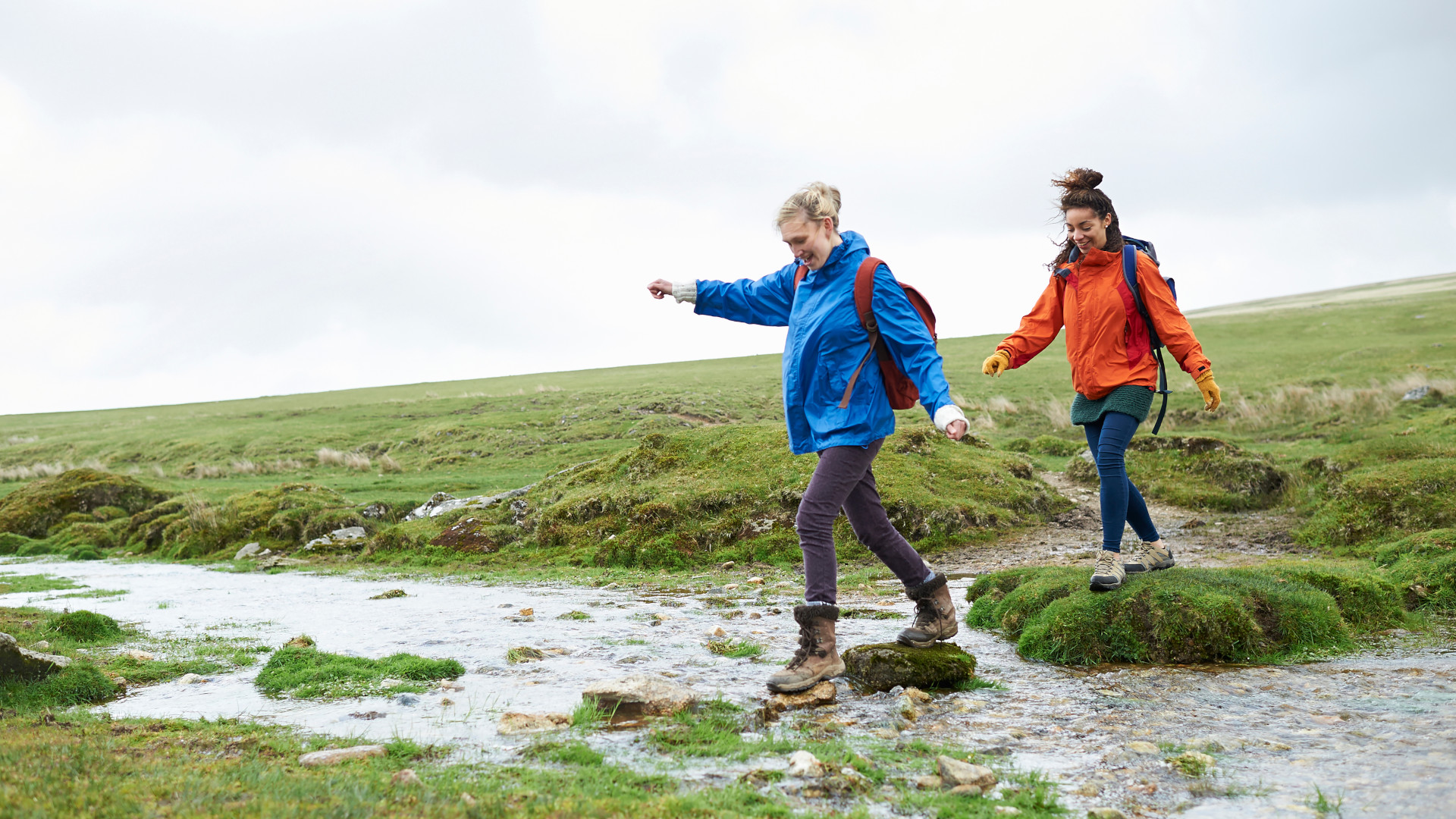

Looking for a full-body workout that’s fun, sociable and doesn’t involve hitting the gym? You should try rucking. Although, the chances are you probably already have. “Rucking is the action of walking with weight on your back,” says rucking gear company, GORUCK.
Rucking is actually a staple in military training to build strength and endurance. But due to its many benefits and accessibility, it’s gaining popularity as a way to keep fit and stay active. As well as being a great cardio workout, incorporating some weight into the mix makes it a great way to build muscle and strengthen your core too.
Fancy giving it a go? Here’s everything you need to know.
What is rucking?
Rucking is literally where you walk with a weighted rucksack (or backpack). You may think this sounds familiar to hiking, but hiking is rucking that’s done specifically in the mountains, whereas rucking is anywhere else but there.
Benefits of rucking

1. It gets you outdoors
We all know the benefits of spending time in green spaces when it comes to improving our mental health, including reducing stress, boosting our mood and improved sleep. Rucking is your one-way ticket to do just this.
2. It's a full-body workout
Get all the latest news, reviews, deals and buying guides on gorgeous tech, home and active products from the T3 experts
Walking is a great form of low-impact cardio, but rucking takes this to the next level. The brisker pace increases your heart rate, helping you to burn more calories, while the additional weight on your back forces your legs, back and glutes to work harder. You’re also having to keep a good posture, whilst maintaining balance and stability, so it’s great for strengthening your deep core muscles too.

3. It's for everybody
While some types of exercise require a certain level of skill, rucking is easy and something that anyone can do as it requires very minimal equipment. Just grab yourself a backpack and you're good to go!
4. It can improve your posture
Having a weighted rucksack on your back forces your shoulders back, which is how they should be if your posture is correct, not slouched forwards. If you try doing this while rucking it won't feel comfortable, so it's a good way to train your body to stay in a good, upright position.
How to get started
Obviously you're going to need a backpack of some sort, a medium-sized one or even a hiking backpack will do nicely. However, GoRuck even have a rucksack called the 'Rucker', which was specifically made for rucking.
Next, you're going to need some weight to put in your bag. You could either add a weight plate or if you have any free weights, like a pair of dumbbells or a kettlebell these will also do. Wrap them in a towel though for a bit of cushioning. If you don't have any of these then just reach for household items – books, large water bottles, bricks, whatever you can find to add some weight.
Finally, begin walking! Don't go too hard too fast, start with a gentle pace and make sure you maintain an upright posture.
Rucking workout for beginners

Below, Nichele Cihlar, Director of Training at GORUCK, has shared a bespoke rucking training plan to get your body working. "Start with 1-2 ruck workouts per week, aiming for 2-3 miles," says Nichele. "Your rucking pace should be between 15 and 20 minutes per mile. But if you find that you’re moving slower than 20 minutes per mile, lower your weight."
Nichele advises to start with 10-25 pounds of weight in your backpack and that once you become comfortable with this to add five pounds per week. If you're not comfortable with the weight though, just lower it and aim for a longer distance.
"You’ll notice some muscle soreness—that's a good thing," says Nichele, "it means your body has already started adapting." Ready to try it yourself? Here's a rucking plan you can follow.
- Week 1: 1 ruck | 2.5 miles | 17-20 minutes per mile
- Week 2: 1 ruck | 2.5-3 miles | 17-20 minutes per mile
- Week 3: 2 rucks | 2-2.5 miles | 17-20 minutes per mile
- Week 4: 2 rucks | 3.5-3 miles | 17-20 minutes per mile
- Week 5: 3 rucks | 3 miles | 17-20 minutes per mile
- Week 6: 3 rucks | 3 miles | 17-20 minutes per mile

Bryony’s T3’s official ‘gym-bunny’ and Active Staff Writer, covering all things fitness. She is a certified personal trainer and also a part-time fitness instructor. In her spare time, you will find her in her natural habitat - the gym - where her style of training is a hybrid of bodybuilding and powerlifting. Bryony loves writing about accessible workouts, nutrition and testing innovative fitness products that help you reach your fitness goals and take your training to the next level.